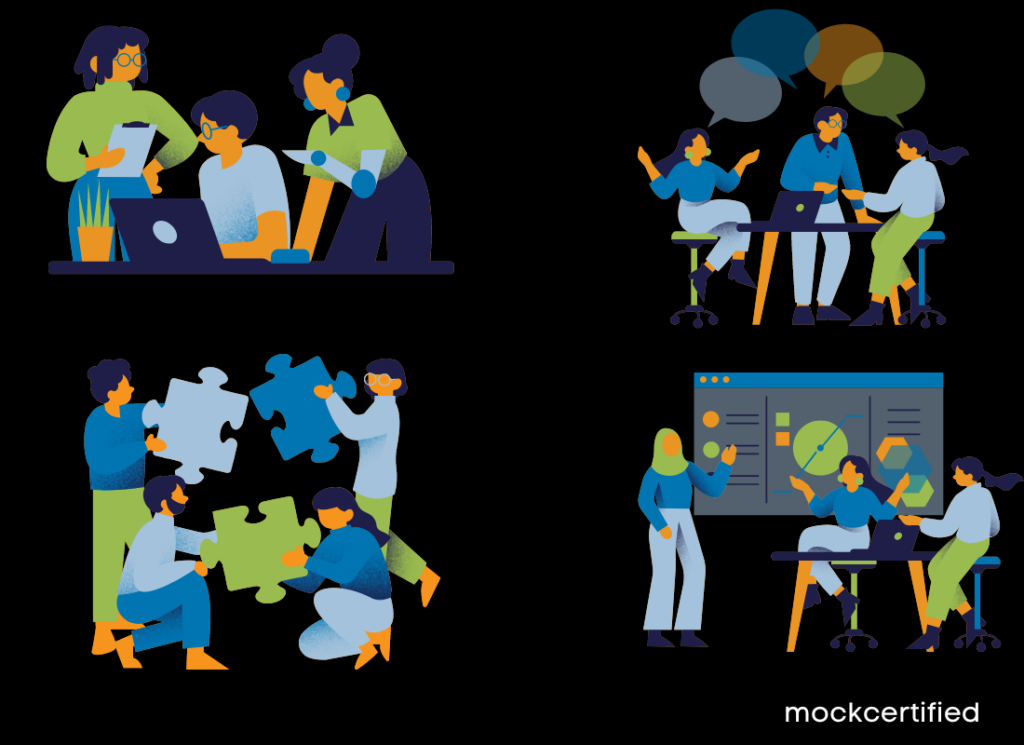
As businesses strive for excellence in process improvement and operational efficiency, Six Sigma has emerged as a leading methodology.
Six Sigma is a data-driven approach that focuses on minimising process variation and defects to achieve high levels of quality and performance.
Central to the success of Six Sigma are the individuals who have been trained and certified in different levels, known as Six Sigma Belts.
In this article, we will explore the various Six Sigma Belt levels, their roles and responsibilities, and how to obtain Six Sigma certification.
Table of Contents
Introduction to Six Sigma Belt Levels
Six Sigma Belt levels represent different levels of expertise in the Six Sigma methodology. Each belt level signifies a certain level of proficiency and responsibilities in process improvement projects.
The concept of Six Sigma Belts is derived from the martial arts belt system, where different belt colours represent different levels of expertise.
Similarly, Six Sigma Belts progress from basic to advanced levels, with each level having its own unique set of skills and responsibilities.
Overview of Six Sigma Methodology

Before delving into the details of Six Sigma Belt levels, it’s important to understand the overall methodology of Six Sigma.
Six Sigma follows a structured approach known as DMAIC, which stands for Define, Measure, Analyze, Improve, and Control.
This approach provides a systematic way to identify and eliminate process defects and achieve process excellence.
The Define phase involves defining the problem and setting project goals. The Measure phase focuses on collecting and analysing data to understand the current process performance.
In the Analyze phase, data is analysed to identify root causes of defects. The Improve phase involves implementing solutions to address the root causes and improve process performance.
Finally, in the Control phase, the improvements are monitored and sustained over time.
Importance of Six Sigma Belt Levels
Six Sigma Belt levels are crucial in ensuring the successful implementation of Six Sigma projects.
Each belt level brings a unique set of skills and expertise to the table, enabling organisations to effectively identify and eliminate process defects, reduce variation, and achieve process excellence.
The different belt levels are designed to cater to individuals with varying levels of experience, from beginners to advanced practitioners, and provide a clear career progression path for those interested in pursuing a Six Sigma career.
Different Levels of Six Sigma Belts

Six Sigma Belt levels are categorised into different colours, representing different levels of proficiency and responsibilities. Let’s take a closer look at each belt level and their roles:
- Master Black Belt
The Master Black Belt is the highest level of Six Sigma certification and is typically reserved for individuals who have extensive experience in leading and managing Six Sigma projects.
Master Black Belts are responsible for mentoring and coaching Black Belts, Green Belts, and other team members. They provide strategic guidance, drive process improvement initiatives, and act as change agents within the organisation.
Master Black Belts are also responsible for developing and implementing Six Sigma training programs, establishing measurement systems, and ensuring the sustainability of process improvements.
- Black Belt
Black Belts are experienced professionals who lead and manage Six Sigma projects.
They are responsible for applying the Six Sigma methodology to identify and solve complex problems, reduce process variation, and improve process performance.
Black Belts are skilled in using statistical tools and techniques to analyse data, identify root causes of defects, and implement solutions.
They also work closely with cross-functional teams and act as change agents to drive process improvements across the organisation.
- Green Belt
Green Belts are individuals who work on Six Sigma projects as part of their regular job responsibilities.
They assist Black Belts in collecting and analysing data, implementing process improvements, and monitoring the results.
Green Belts are trained in basic Six Sigma tools and statistical techniques and can lead small-scale projects independently.
They also work closely with other team members to identify process improvement opportunities and provide support in implementing solutions.
- Yellow Belt
Yellow Belts are individuals who have basic knowledge of Six Sigma tools and techniques and participate in process improvement projects as team members.
They are typically responsible for collecting and analysing data, conducting process mapping, and providing support to Green and Black Belts.
- White Belt
The White Belt is the entry-level Six Sigma certification and provides an introduction to the Six Sigma methodology.
White Belts are typically individuals who have little or no experience with Six Sigma but are interested in learning more about process improvement.
They may participate in Six Sigma training and support Six Sigma projects as team members.
Obtaining Six Sigma Certification
To become a Six Sigma certified professional, individuals must complete training and pass an exam. The type of training and exam required varies depending on the level of certification being pursued.
You can take a Six Sigma belt test here for free!
There are several organisations that offer Six Sigma certification, including the American Society for Quality (ASQ), the International Association for Six Sigma Certification (IASSC), and the Six Sigma Academy.
Key Tools for Process Improvement:
- Process Mapping: Visual representation of a process to identify steps, inputs, outputs, and potential inefficiencies.
- Fishbone Diagrams (Ishikawa or Cause-and-Effect Diagrams): Graphic tool to identify and categorize potential causes of a problem or effect.
- Control Charts: Statistical tool to monitor process stability and identify variations over time.
How These Tools Contribute to Process Improvement:
- Process Mapping: Provides a clear understanding of the entire process, helping to identify bottlenecks, redundancies, and areas for optimization.
- Fishbone Diagrams: Helps uncover root causes of problems, facilitating targeted improvements and preventing recurrence.
- Control Charts: Tracks process performance, identifies trends, and enables timely interventions to maintain consistent quality.
Common Challenges with Six Sigma Implementation:
- Resistance to Change: Employees may resist altering established processes, fearing disruptions or job insecurity.
- Lack of Leadership Buy-In: Without management support, Six Sigma initiatives might lack necessary resources and authority.
- Inadequate Training: Without proper training, teams might struggle to apply Six Sigma tools effectively.
- Inaccurate Data: Incomplete or inaccurate data can lead to incorrect conclusions and suboptimal improvements.
- Unrealistic Expectations: Organizations may expect immediate and dramatic results, leading to disappointment if progress is gradual.
Conclusion
Six Sigma Belt levels provide a clear path for individuals interested in pursuing a career in process improvement and operational excellence.
Each belt level signifies a certain level of proficiency and responsibilities, with Master Black Belts at the top and White Belts at the entry level.
Obtaining Six Sigma certification involves completing training and passing an exam, and there are several organisations that offer certification.
By leveraging the expertise of Six Sigma Belt holders, organisations can achieve process excellence, reduce process defects, and improve operational efficiency.

Check out the professionally handpicked FAQs below that are currently popular on the internet!
Why do some folks push back against Six Sigma changes?
Change can be scary. People worry their jobs might change, or things won’t be familiar anymore. So, they resist new ways.
Why is it important for leaders to support Six Sigma?
Leaders help by giving resources and showing they believe in the new way. When the bosses are on board, everyone follows the plan better.
How can companies handle not enough training during Six Sigma changes?
Giving everyone proper training helps them use Six Sigma tools well. When we know how to use them, we make better improvements.
Can bad data mess up Six Sigma projects?
Yes, it can! If we use wrong or missing information, we’ll make mistakes and waste time. Good data leads to good decisions.
How do we deal with thinking Six Sigma will fix everything instantly?
It’s natural to expect quick results, but Six Sigma is more like a steady climb than a sprint. We manage expectations by setting realistic goals and showing the progress we make step by step.



